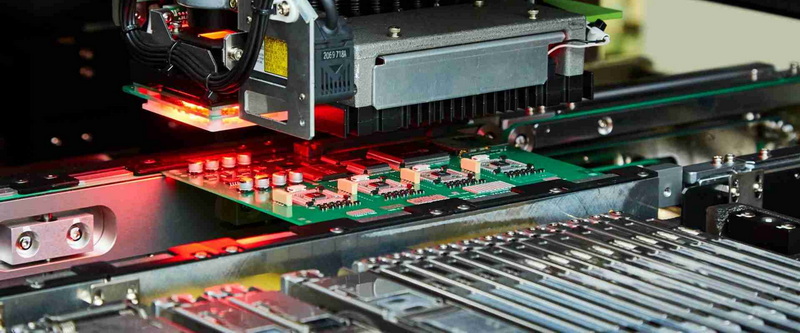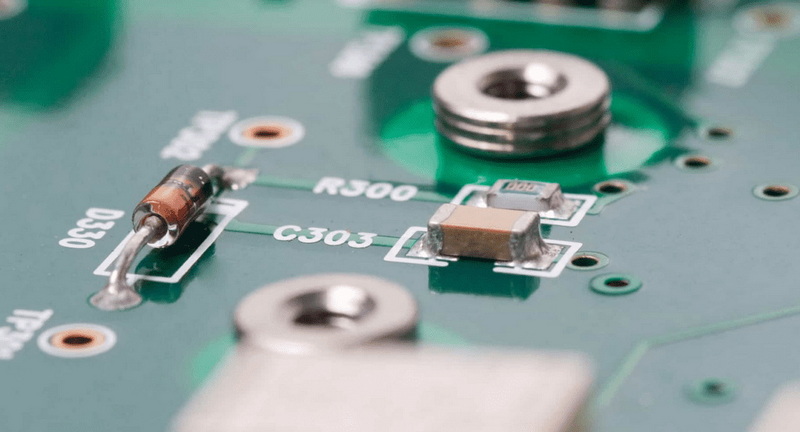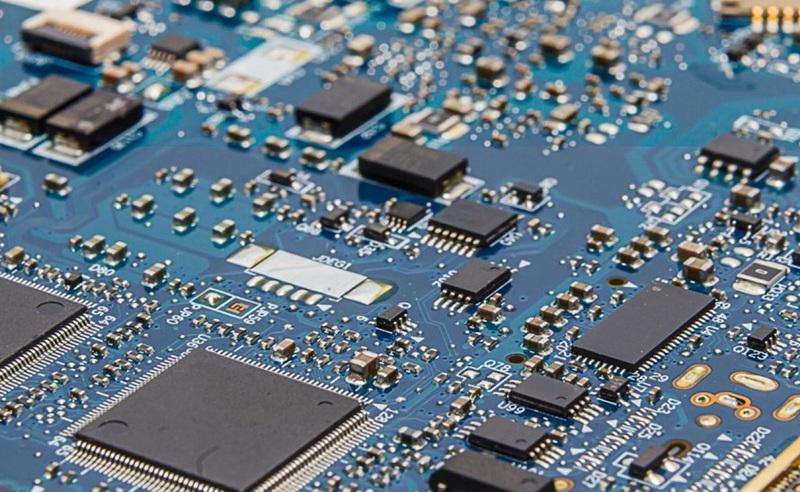Content Menu
● Why Consider Buying Used PCB SMT Equipment?
● Key Steps to Ensure Quality When Buying Used PCB SMT Equipment
>> 1. Assess Your Production Needs
>> 2. Research the Seller
>> 3. Inspect the Equipment Thoroughly
>> 4. Verify Compatibility
>> 5. Evaluate Quality Control Features
>> 6. Consider Total Cost of Ownership
>> 7. Understand the Equipment's History
>> 8. Negotiate Terms and Conditions
● Common Challenges When Buying Used PCB SMT Equipment
>> 1. Hidden Defects
>> 2. Limited Warranty
>> 3. Obsolete Technology
>> 4. Incomplete Documentation
● Tips for Negotiating a Good Deal
● The Importance of Due Diligence
● Future-Proofing Your Investment
● Conclusion
● FAQs About Buying Used PCB SMT Equipment
>> 1. What are the key factors to consider when buying used PCB SMT equipment?
>> 2. How can I verify the reliability of a seller?
>> 3. Is it better to buy locally or from international sellers?
>> 4. How do I ensure compatibility with my current setup?
>> 5. Are there risks associated with buying older SMT models?
Purchasing used PCB SMT (Surface Mount Technology) equipment can be a cost-effective solution for businesses looking to enhance their production capabilities without incurring the high costs of new machinery. However, ensuring the quality and reliability of the equipment is crucial to avoid operational disruptions and additional expenses. This guide provides comprehensive insights into how to make informed decisions when buying used PCB SMT equipment.

Why Consider Buying Used PCB SMT Equipment?
Investing in used SMT equipment offers several advantages:
- Cost Savings: Used equipment is significantly cheaper than new machines, making it ideal for startups or businesses with budget constraints.
- Faster Availability: Unlike new equipment, which may require long lead times, used machines are often readily available.
- Access to High-End Models: Purchasing used allows businesses to afford high-quality, advanced models that may otherwise be out of reach.
- Environmental Benefits: Buying used equipment contributes to sustainability by extending the lifecycle of machinery and reducing electronic waste.
Despite these benefits, buying used equipment comes with risks that require careful evaluation and due diligence.
Key Steps to Ensure Quality When Buying Used PCB SMT Equipment
1. Assess Your Production Needs
Before purchasing, understand your specific production requirements:
- Production Volume: Determine the capacity you need to meet current and future demands.
- Component Types: Ensure the machine can handle the components you work with, including size ranges and packaging types.
- Space Constraints: Verify that the equipment fits within your facility and consider any additional space needed for maintenance or upgrades.
- Precision Requirements: Evaluate the accuracy and repeatability specifications of the equipment to match your product quality standards.
2. Research the Seller
The credibility of the seller is paramount. Look for:
- Reputable Dealers: Choose sellers with positive reviews and a proven track record in the SMT equipment market.
- Certifications: Verify if the seller provides documentation like ISO certifications or maintenance records to ensure quality standards.
- After-Sales Support: Confirm if they offer technical support, training, or warranties to assist you post-purchase.
- Industry Reputation: Check industry forums and networks for feedback on the seller's reliability and service quality.
3. Inspect the Equipment Thoroughly
A detailed inspection is critical to assess the condition of the machine:
- Physical Condition: Check for visible wear and tear, rust, or damage that could affect performance.
- Functionality Tests: Test the machine's performance under real operating conditions, including speed, accuracy, and reliability.
- Maintenance Records: Review logs for past repairs and servicing to understand the equipment's history and potential future issues.
- Software and Firmware: Verify that all software and firmware are up-to-date and licensed for your use.
4. Verify Compatibility
Ensure that the used SMT equipment aligns with your existing setup:
- Software Integration: Confirm compatibility with your current systems, including production planning and quality control software.
- Power Requirements: Match voltage and power specifications to avoid costly electrical modifications.
- Spare Parts Availability: Check if spare parts are readily available in case of future repairs or maintenance needs.
- Feeder Compatibility: If you have existing feeders, ensure they are compatible with the used equipment you're considering.
5. Evaluate Quality Control Features
Quality control is essential in PCB assembly. Look for machines equipped with:
- Automated Optical Inspection (AOI) systems for detecting defects.
- Solder Paste Inspection (SPI) capabilities to ensure proper solder application.
- X-ray inspection tools for hidden solder joints and BGA components.
- Statistical Process Control (SPC) features for ongoing quality monitoring.

6. Consider Total Cost of Ownership
When buying used PCB SMT equipment, factor in:
- Initial Purchase Price: Compare prices across multiple sellers to ensure you're getting a fair deal.
- Shipping and Installation Costs: Include expenses for transportation, setup, and initial calibration.
- Training Expenses: Budget for operator training if needed, especially for complex or unfamiliar equipment.
- Maintenance and Repair Costs: Estimate ongoing maintenance expenses and potential repair costs.
- Energy Efficiency: Consider the equipment's power consumption and its impact on your operational costs.
7. Understand the Equipment's History
Gathering information about the equipment's past can provide valuable insights:
- Previous Owner: If possible, learn about the previous owner and how they used the equipment.
- Operating Hours: Request information on the total operating hours to gauge the machine's wear.
- Environmental Conditions: Understand the conditions in which the equipment was previously operated, as extreme temperatures or humidity can affect longevity.
8. Negotiate Terms and Conditions
When finalizing the purchase:
- Warranty: Push for a warranty, even if limited, to cover potential issues immediately after purchase.
- Return Policy: Clarify the return policy in case the equipment doesn't meet expectations upon delivery.
- Support Agreement: Discuss options for ongoing technical support or maintenance contracts.
Common Challenges When Buying Used PCB SMT Equipment
1. Hidden Defects
Used machines may have underlying issues not visible during initial inspections. Always insist on a trial run and consider hiring a third-party inspector for an unbiased assessment.
2. Limited Warranty
Used equipment often comes with limited or no warranty. Negotiate for at least a short-term warranty period and consider purchasing extended coverage if available.
3. Obsolete Technology
Older models may lack modern features or software updates. Ensure that the technology meets current industry standards and can be upgraded if necessary.
4. Incomplete Documentation
Some used equipment may come with incomplete manuals or documentation. Request all available documentation and consider the cost of obtaining missing information.
Tips for Negotiating a Good Deal
1. Compare prices from multiple sellers to understand market rates for the specific model and condition.
2. Request additional services like installation, training, or initial maintenance as part of the deal.
3. Leverage bulk purchases for discounts if buying multiple units or complementary equipment.
4. Consider the timing of your purchase, as prices may fluctuate based on market demand and end-of-year sales.
The Importance of Due Diligence
When buying used PCB SMT equipment, thorough due diligence is crucial:
- Performance Benchmarks: Request performance data and compare it to industry standards.
- Legal Considerations: Ensure the equipment complies with current safety and environmental regulations.
- Insurance: Check if your existing insurance policy covers used equipment or if additional coverage is needed.
Future-Proofing Your Investment
Consider the long-term viability of the equipment:
- Upgradability: Check if the equipment can be upgraded to meet future technological advancements.
- Scalability: Ensure the equipment can handle increased production volumes as your business grows.
- Industry Trends: Research upcoming trends in PCB assembly to ensure the equipment won't become obsolete quickly.
Conclusion
Buying used PCB SMT equipment can be a smart investment if done carefully. By thoroughly assessing your needs, researching sellers, inspecting equipment, and ensuring compatibility, you can minimize risks and maximize value. Always prioritize quality over cost to ensure long-term reliability and efficiency in your production processes. With the right approach, used SMT equipment can provide significant cost savings without compromising on performance or quality.

FAQs About Buying Used PCB SMT Equipment
1. What are the key factors to consider when buying used PCB SMT equipment?
Key factors include the condition of the equipment, compatibility with existing systems, availability of spare parts, and quality control features like AOI and SPI systems. Additionally, consider the equipment's history, total cost of ownership, and potential for future upgrades.
2. How can I verify the reliability of a seller?
Check their reputation through customer reviews, request certifications or maintenance records, and inquire about after-sales support or warranties. Also, consider visiting the seller's facility if possible and ask for references from previous customers.
3. Is it better to buy locally or from international sellers?
Buying locally allows easier inspections and faster delivery but may limit options. International sellers offer more variety but involve higher shipping costs and potential customs delays. Consider factors like support availability, shipping costs, and import regulations when deciding.
4. How do I ensure compatibility with my current setup?
Verify software integration capabilities, power requirements, and whether spare parts are available for future repairs. Also, check feeder compatibility and any necessary adaptations for your production line.
5. Are there risks associated with buying older SMT models?
Older models may lack modern features or software updates and could have limited spare parts availability. Always evaluate if they meet current production standards before purchasing. Consider the cost of potential upgrades or modifications needed to keep the equipment relevant.




















